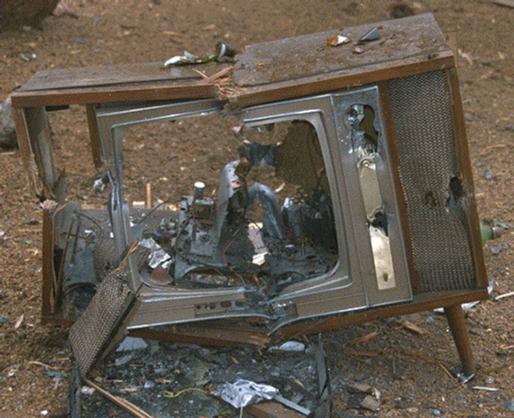Physical Activity Levels Have Changed through the History of Technological Advances
With America's pro-reason philosophy and unprecedented freedom, their consequence was the Industrial Revolution. With it came relief from hard labor and timesaving machinery. Since the rise of the Industrial Revolution American society has been able to thrive from more efficient and convenient items for consumers and workers. “In an agricultural or industrial society, work is strenuous; in effect, the worker is "paid to exercise."(Harris). But, with the growing increase in efficient machinery in the workplace, workers were not subjected to an exercise filled environment. The 20th century witnessed the transition of an economy dominated by physical labor to one more intellectually driven, involving the continual growth of everyday labor-saving devices, including the automobile, vacuum cleaner, and remote-controlled TV (theai). All of these developments created for the general population a dramatic explosion of wealth, food production, and spare time for rest and recreation.

Image Source: http://www.sanford-artedventures.com/study/images/millet_gleaners_l.jpg
Throughout the times of agricultural domination many people worked throughout the fields picking items individually and having to prepare items by hand. But, once the agricultural network was shocked by the Industrial Revolution, technology took the place of workers. This replacement created a shift from agricultural jobs to industrial jobs. The new technology helped the growth of markets for increased demands for agricultural products, which encouraged the introduction of machinery to the farms. These technological advances lowered the cost of caloric consumption by lower the costs to produce goods while raising income to afford these goods (Philipson). Machinery increased productivity so that fewer hands could produce more food per acre. New plows, seed drills, cultivators, mowers, and threshers, as well as the reaper, all appeared by 1860 (farming). After that, better harvesters and binding machines came into use, as did the harvester-threshers known as combines. Farmers also used limited steam power in the late 19th century, and by about 1905 they began using gasoline-powered tractors (farming). At about the same time, Americans began to apply science systematically to agriculture, such as by using genetics as a basis for plant breeding. These techniques, plus fertilizers and pesticides, helped to increase farm productivity while reducing the need for human laborers. Instead of employing many people working tirelessly to efficiently run a farm, machines replaced this slower labor for the increase in product to meet demand faster.
With the Industrial Revolution spawning an eventual society of recreational fanatics placing importance on rest and relaxation, their need was met with inventions such as automobiles and remote-controlled TV’s. With the TV’s convenience spawned the birth of the TV dinner and Fast Food restaurants promoting easier and quicker meals. Manufacturers rose up everywhere to supply ready to eat foods with a longer life and packaged foods for fast food restaurants. This produced a transition away from fresh foods to processed foods for more convenience. Today, this “convenience” translates into an American diet that is made up of over 40% fat, with the average individual consumption of sugar estimated at more than 100 pounds annually (America). The introduction of convenient TV dinners allowed cooking meals to not be a chore, and to relinquish hunger in an expedient fashion. Besides the time spent outside of work relaxing and accomplishing nothing, people were becoming lethargic with cooking their own food. The technological advances chanced caloric expenditure from having physical activity included in the vocational aspect to the option of doing it as a leisure activity (Philipson).

Image Source: http://www.singsingsing.com/has/tv-2.jpg
In today’s society, possibly the largest contributor to the current and future obesity problem is and will be video games and the Internet (computer). Currently with the growing “couch potato” generation, kids are sitting around playing more video games rather than going outside to play or participate in sports. The Media Wise Video Game Report Card highlights the Institute's largest student survey ever, highlighting the impact of increased screen time on childhood obesity (Jive). These video games and computer software are a concern because these activities have replaced physically active play. Not only are young children burning few calories, but also watching TV and playing video games often go hand in hand with snacking on high-calorie fat foods. With the increase in caloric content without the expenditure in any activity, it is easy to see how our nation’s youth can quickly acquire obesity related effects.

Image Source: http://www.oneworld.net/penguin/pollution/couch_potato.gif
Although the technological advances have greatly affected our society in a positive light, there are many negative consequences to this newfound life of luxury. By having machinery take over the simplest tasks in life, our energy expenditure decreases unless one chooses to do physical activity. The industrial revolution transitioned the society from a forced labor to the choice to relax or participate in activity. The choice on whether to be active or rest is causing the influx in obesity and health related ailments. Children are also affected from the modern inventions, and having this technology from birth could affect them the greatest. Our quality of life in the future lies in jeopardy if action is not taken to correct the reduction of activity levels.

